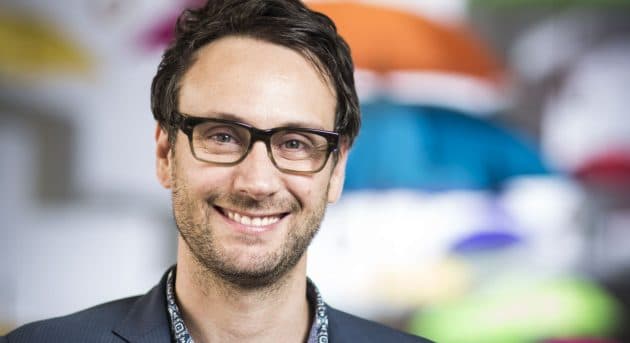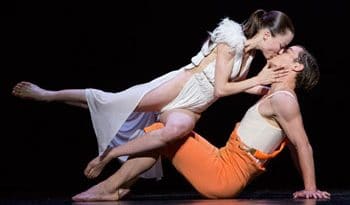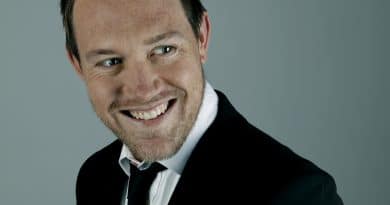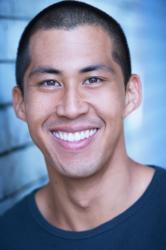A Chat with Festival Director Joseph Mitchell of the OzAsia Festival Sept 17 – Oct 2
The OzAsia Festival is one of the most highly regarded celebrations of Asian Theatre and performance anywhere in the world. Each year in Adelaide, it is held specifically to celebrate the depth of modern performance culture across the gamut of all performance arts. From technology infused dance performances, to family shows involving puppetry, to stand up comedy with the very funniest performers sourced from across the Asian-Pacific. Whatever your tastes, Festival Director Joseph Mitchell thinks that there will be something for you.
AussieTheatre.com’s Chris Fung sat down with Joseph for a brief chat about it all.
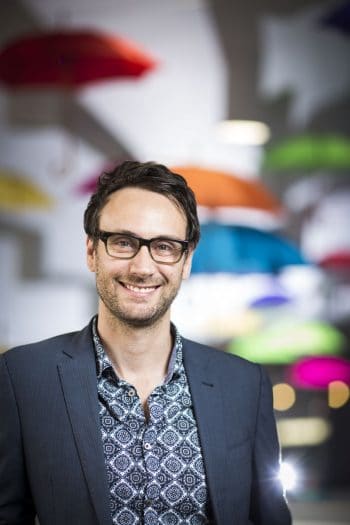
CF: What is an art festival? If I’ve never been to, or heard of one, what can I expect?
JM: An Arts festival is an opportunity for audiences of a city to come and experience the depth and breadth of an artistic practice. An arts festival can define its artistic identity in different ways, and so, you can have festivals which focus on a certain thing. The OzAsia festival is about presenting and showcasing the best performing arts, music, film, and visual arts from Asia to audiences here in Australia.
CF: Why OzAsia? Why Asian stories? Why has Australia devoted the resources and organisation required for this festival? Are Asian stories really that important for Australian audiences?
JM: Australia has an excellent history of presenting festivals that have a very strong identity hailing from Europe that were created in the 20th century, many of whom are still going strong to this day. However, taking a look at the arts sector ten years ago, arguably there weren’t a lot of arts festivals. In fact there were none that were focused on a strong identity with Asian stories. Of course as we know, the population of Australia has been changing drastically over the last twenty or thirty years and there’s been a huge influx of families migrating from Asia. It was clearly not just timely, but possibly overdue for Arts festivals to turn their attention towards what was happening in the cultural scene across the largest continent on the planet.
CF: So it’s about representing a demographic that traditionally hasn’t been presented in Australian Arts?
JM: That, as well as reflecting the society that we live in.
CF: On that note, last year you had 230,000 people come to your festival. That is an astronomical number. My question is: who are these people? Is that attendance a reflection on how well you’ve managed to represent the Asian community of Arts performers? What is it that you’ve managed to tap into that has led to that level of success?
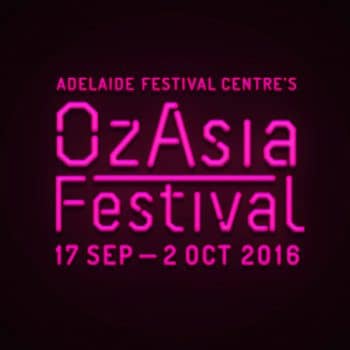
CF: Alright, let’s talk a little about you. From the Australian Swim Team as a young adult to Arts Administration for one of the Nation’s biggest festivals, that seems like quite a pivot in life direction. What was that transition like from the life of an aspiring athlete, to one of the young stars of the Australian Theatre Scene? Have your experiences in sport allowed you any particular insights which give you an advantage in dealing with the difficulties of Festival programming and structuring?
JM: Well it doesn’t feel like a big pivot because swimming was just something you just did as a teenager, and I just kind of kept going to swimming and classes after school every day for what ended up being ten years or so.
I never really thought of myself as a professional swimmer. I just kind of swam until 20 or 21 and thought that I’d better go to University now.
CF: Ha! So joining the Australian Swimming team was just something that you did?
JM: Yeah that’s right. I kind of got to 21 and thought, well you can’t keep swimming for the rest of your life, better find something to do. And actually, it’s pretty hard getting up at 4:30am every morning. So when it came time to choose something at University, I’d always loved Theatre and Acting in high school, so it was a natural choice to do a degree majoring in Communications thinking I would get a job as a Journalist.
CF: That must be why your answers are so beautiful and well-spoken.
JM: (Chuckles)Well I did my second major in Theatre, thinking that I love theatre. But, ‘There’s no such thing as a job in Theatre’, that’s what I thought back then. So I went to University late, I graduated when I was 25, and I looked at what a cadetship paid for a journalist, and I saw that it was about 200 dollars a week. When you’re 25, you think you’re 40 but you’re not. I thought, ‘I can’t really live on 200 dollars a week, I’m meant to be a mature young adult’. So I decided there’s no way I’m going to follow Journalism as a career.
So this was when I started making Theatre with my friends and doing freelance work. After that, I did my post graduate in theatre down in Melbourne, and one thing led to another and then I worked for Queensland Theatre Company for about 5 years. There, I was the Youth and Education manager and Resident Director, directing a lot of the theatre shows particularly programmed for younger audiences. That was really important for me, it instilled a value and understanding that the Arts should be very accessible to young audiences. I mean, you really want to make sure that young Australians, the next generation, keep falling in love with the Arts – that’s a really strong thing that I took from working at QTC. So when I went into Festivals, I took that emphasis on young audiences with me and I think in today’s demographic terms, ‘young’ refers to anybody under the age of 40 (chuckles).
CF: Haha!
JM: Well yeah, by the time I’m 50, I think young people will be counted as under 50. And there you have it, that was kind of my trajectory into the Arts.
CF: Did you ever feel that you were fighting from behind? All these people who had been spending their lifetimes being ‘Artists’. Because 25 seems quite late to begin your journey in Arts, and then to rise to such levels as you have. Did you ever feel behind the 8 ball?
JM: Well no, not really. I’ve only ever pursued things that interested me at a particular point in time, and I think that the Arts is an industry where you really need to be led by your own passion and nothing else. I think that if you let yourself be led by something else, you probably are not suited to the arts. So I’ve gone through a lot of transitions in terms of my own interests. At first I was drawn to the State Theatre companies, and then I became drawn to Arts Festivals with questions like “What is the potential for the performing arts in the 21st century and where should it be going?” and “Who are the types of artists who are doing interesting things that are influencing the direction of the arts in the future?”. These are the kinds of questions which have led me to an interest in the OzAsia festival. I believed that a lot of the exciting aspects of contemporary culture are coming from things like architecture coming out of Shanghai or the subcultures out of Tokyo or the Fashion Industry in Indonesia.
CF: That’s quite a broad mandate to select from. If that’s the governing policy behind your programming decisions for OzAsia, how do you come across the performances themselves? Is it kind of like fishing, where you leave your bait out there and just see what’s swimming?
JM: Well, it’s not drastically different from other arts festivals where it’s a combination of artists and relationships acquired over several years, and knowing those artists and wanting to provide a platform for those experienced and established artists to become known to Australian audiences.
CF: You must have thousands upon thousands of applications each year for your festival. In examining your program, the performance types and genres really run the gamut –I mean you have dance, and experimental music, and cabaret and electronic storytelling, the list goes on. My question is – how do you sort through it all? Is it at all like comparing Apples and Oranges? Does it mean that you personally have to have a very strong technical knowledge across the breadth of possible performance styles? How do you choose?
JM: I try to make sure it’s a balanced program – so that means it has to connect with the vision that we are putting forward, which is about showcasing contemporary culture from all across Asia. Then, it’s making sure that that brief can be achieved for different audiences, for example if you are into cutting edge contemporary dance, then Hiroki Yamada who is really kind of doing amazing things in contemporary dance, but at the same time we are doing things like “Fair Circus” from Cambodia who are accessible to families, or you know we’ll look at a film program where some films will have blockbusters, and some other films will be quite well received by critics in film festivals all around the world. Or in theatre we might have some traditional work where the audiences sit and watch the show, or we might have very immersive theatre experiences where audiences have to actually participate in the performance in some way. So the idea is that the festival should have something for everybody and there should be a range of different experiences for people to discover.
CF: I imagine that that makes it a really hard thing to figure out. I mean if you do have this variety of genre – is it that you only have so many slots to devote to any particular show type? How do you decide what those types are? I suppose it’s a lot like auditioning, except on a bigger scale, you have to figure out what the ‘best’ things are except the barometers are wide open – you don’t have a casting breakdown. Or do you? What are the challenges in that?
JM: Well that’s the best part of the role actually. As you say, the challenge is really in that decision making process – I mean with the right budget the festival could be five times bigger. There’s a really crucial team involved in putting a festival together. We have a film programmer, we have 2 people that contribute to the music program we have a visual arts programmer, obviously myself, and then the wider programming team. We all consult on what the makeup of the programming is – so there’s a lot of dialogue behind the scenes to make the festival work.
CF: Movement and dance form a big part of the storytelling aesthetic throughout many Asian cultures, and it forms a big part of OzAsia’s historical programming vision as well – do you think that Dance is a medium that your regular Joe Australian can identify with? How have you found the response to dance performances so far?
JM: For me, dance is very much the art form that I think will have the most influence over the course of the 21st century. I think that the 20th century was very much dominated by text and theatre. And I think we’ve kind of evolved into such a visual, codified and fast paced language that the scope of what dance is, will kind of influence performing arts in the coming decades. It’s interesting that your research already hits the nail on the head. What’s fascinating about Asian cultures, is that it draws heavily from dance and movement as a communication tool through hundreds and hundreds of years of history, and what’s beautiful about contemporary culture now is that a lot of the artists making work, are drawing from a contemporary aesthetic and a historical background and fusing them together into something altogether new.
The OzAsia Festival runs from September 17 to October 2. Locations and prices vary between shows. A Festival Pass entitles the holder to view any 5 shows for the price of $149.
For bookings visit ozasiafestival.com.au.

